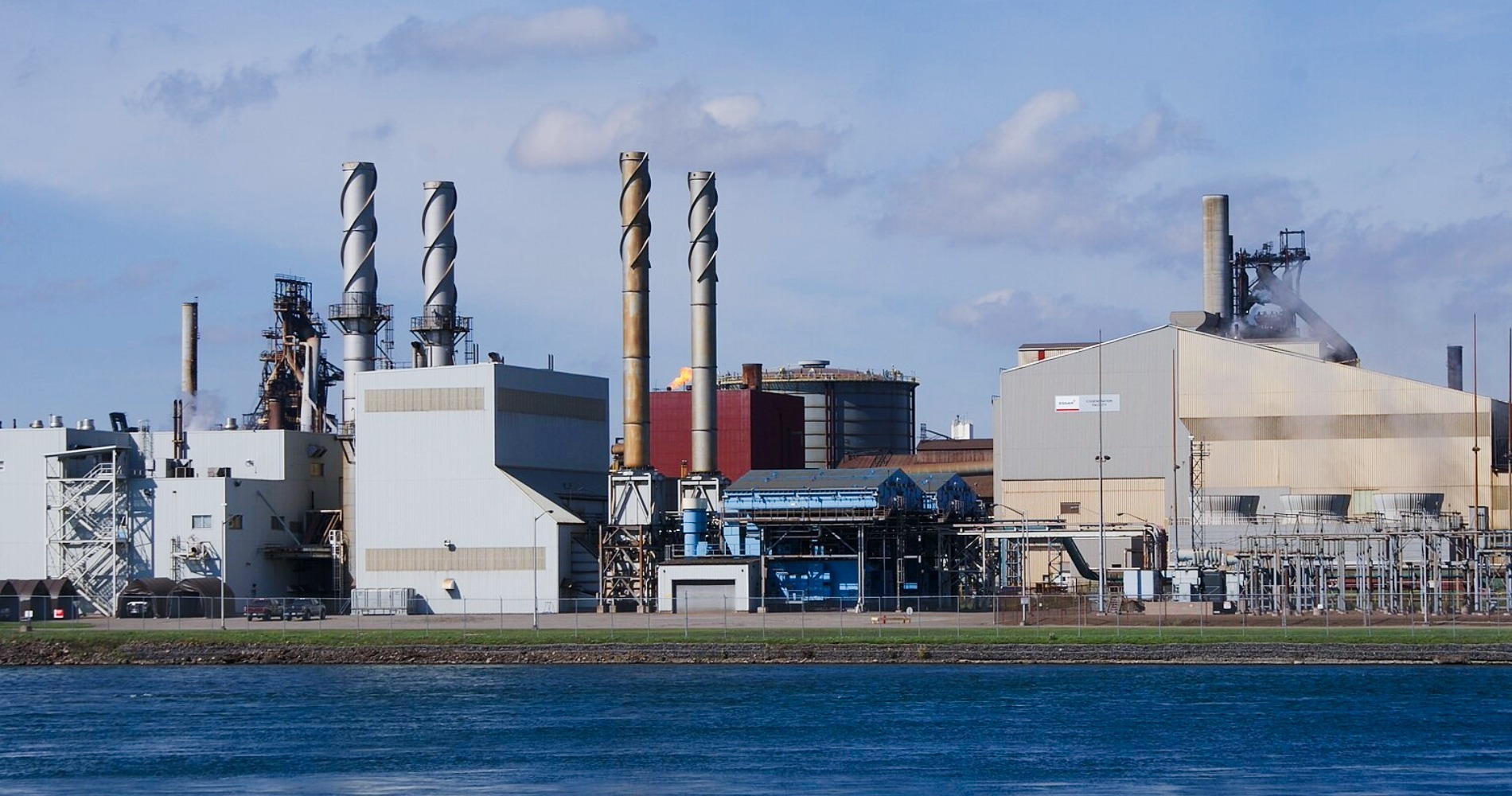While we don’t know the extent of Trump’s tariff war on Canada, we do know it will affect workers’ jobs and livelihoods.
To arrive at a full picture of the jobs and livelihoods threatened by the economic aggression of the Trump administration, we need to consider not just trade-exposed industries, but also the important role that U.S. corporations play in Canada’s economy and labour market.
U.S.-owned companies have been important investors—and, therefore, employers—in Canada for nearly as long as the country has existed. Throughout the 20th century, key Canadian industries have been dominated by U.S. controlled corporations, which have long employed many workers here.
Companies from the U.S. were already investing heavily in Canada, but trade deals like the North American Free Trade Agreement (NAFTA) unlocked an even greater wave of investment. Since the dawn of the free trade era, U.S.-owned corporate affiliates have become even more deeply integrated with Canada’s economy, with a growing role as employers in key sectors.
In the event that U.S. companies begin to leave Canada en masse, we will need a plan to replace their contributions to Canada’s labour market, both in terms of providing income support to impacted workers and reorienting the Canadian labour market away from dependence on U.S. multinationals.
U.S. corporations employ nearly one in 10 workers in Canada
As far back as 1982, nearly a million people (915,000) were employed by U.S.-owned affiliates operating in Canada—over half worked in manufacturing, not just making cars, but a wide variety of products. Employment at U.S.-owned companies rose rapidly in the wake of the signing of the North American Free Trade Agreement (NAFTA) throughout the 1990s, surpassing the highs of the early 1980s and then settling into a pace of slow, but steady growth until very recently.
Using data from Statistics Canada’s program tracking the activities of multinational enterprises, we can access a detailed breakdown of jobs at U.S. majority-owned foreign affiliate corporations—meaning an ownership share of 50 per cent or more—in recent years. Keep in mind that this analysis deals only with majority-owned companies from the U.S., so it presents a minimum case, rather than the full extent of U.S. corporate involvement in Canada’s labour market.
In 2010, U.S. corporate affiliates employed about 1.4 million people in Canada. From that point, employment grew slowly but steadily, until a brief dip in 2020, followed by record hiring. From 2020 to 2023, U.S. affiliates added more than a quarter million jobs, a growth of 19 per cent. By 2023, U.S. affiliates employed 1.66 million people across Canada—that represented 9.4 per cent of people employed in the country in 2023.
In the table below, we can see employment at U.S. affiliates broken down by industry, then shown as a share of total employment across Canada in that industry. We can see a two-tier pattern emerge, where employment at U.S. companies tends to be most concentrated in either high-value industries, where productivity and wages tend to be high, or low-value industries that rely on exploitation of low-wage workers.
At the low end, U.S. affiliates were employing close to 18 per cent of workers in retail trade and over 10 per cent of workers in the logistics and administrative support and waste management industries—a mix of industries with either very low average wages or prominent low-wage sub-sectors like couriers and messengers in the transportation and warehousing industry.
At the high end of U.S. affiliate employment, workers at those companies represented over 21 per cent of people employed across Canada in manufacturing, nearly as many in the professional, scientific, and technical services industries (18 per cent) and over 10 per cent of jobs in mining and oil and gas (11.6 per cent).
While the motives behind current U.S. trade policy are obscure, we should take both Trump and his trade advisers at face value when they said that one of their goals is to “take away” jobs from U.S. trade partners in high-value sectors like manufacturing and technology.
It seems likely that the U.S. government will apply extra pressure on U.S.-based corporations to re-shore their affiliate operations in high-value industries. While it remains to be seen how businesses will respond to the coercion of their own government, we should consider the over half a million high-paying jobs in manufacturing and professional and scientific services at U.S. affiliates to be especially at risk in an escalated trade war.
Compounding that risk, the industries with the highest concentrations of employment at U.S. corporations are also the industries that are the most trade exposed—manufacturing, professional and scientific services, logistics, and wholesale trade.
Some workers have a multinational wage advantage, others not so much
We can turn to another data source, the U.S. Bureau of Economic Analysis (BEA), to learn more about the importance of majority-owned U.S. corporate affiliates—again defined as having an ownership share of 50 per cent or higher—to Canadian livelihoods. In addition to employment levels, this data also covers the total amount of employee compensation paid by U.S. multinationals to residents of Canada.
The table below compares average yearly employee compensation paid by U.S. majority-owned affiliates to the industry average across Canada in 2022. Overall, average compensation paid by U.S. companies ($72,500) was nearly identical to the Canadian average ($71,900). However, there were considerable compensation differences at the industry level.
Again, a polarized labour market structure appears across industries for U.S. affiliates. At the high end, workers at U.S. affiliates earned higher than average compensation in industries like construction (80 per cent), information and culture (36 per cent), finance and insurance (32 per cent), professional and scientific services (12 per cent) and manufacturing (five per cent)
This finding is not unexpected, as research has long suggested the existence of a multinational wage premium, where foreign affiliates tend to pay higher wages because companies that become multinationals are larger, more productive, hire more highly educated workers, and tend to occupy high-value niches in supply chains.
In six major industry groups, U.S. affiliates actually paid lower compensation when compared to the Canadian average. About 30 per cent of people (over 450,000) employed by U.S. affiliates work in the retail, transportation and warehousing industries, where low wages and poor working conditions prevail.
In transportation and warehousing, average compensation at U.S. affiliates was about 11 per cent lower than the Canadian average; in retail, it was even worse—17.4 per cent lower. Far from enjoying a multinational compensation premium, these workers suffer a multinational exploitation penalty.
U.S. multinationals paid $86 billion to Canadian workers in 2022
According to the Bureau of Economic Analysis, U.S. majority-owned affiliates paid $86 billion (in Canadian dollars) of compensation to workers in Canada across all industries in 2022. That’s about six per cent of all employee compensation paid in Canada that year. It is also roughly the size of the initial funding package ($86 billion) for the Canadian Emergency Response Benefit (CERB) income support program in 2020.
The table below displays the total amount of employee compensation paid by U.S. affiliates in Canada, which is then calculated as a share of all compensation paid in that industry. Across six out of 14 industries, U.S. companies paid more than 10 per cent of all employee compensation in 2022. Both in terms of the total compensation paid and the share of wages paid in that industry, the charts are topped by manufacturing and then retail trade—another nod to the polarized employment pattern found at U.S. affiliates.
In the manufacturing sector, U.S. affiliates paid over $25 billion in compensation, which was 17.2 per cent of all wages paid in manufacturing in 2022. That amount would have been nearly enough to pay the annual salaries of all employed people living in Hamilton, Ontario that year.
While wages at U.S. affiliates in the retail sector are already lower than average, the large number of people employed in these industries means that the total wage bill is still quite high. In 2022, U.S. affiliates paid $12.1 billion to workers in retail, an amount nearly equal to the employment income of everyone living in Windsor, Ontario.
What do we do if U.S. companies begin to flee Canada?
In our calculations of jobs and livelihoods at risk—and plans to mitigate those risks—we need to consider the risks of trade exposure and the wider role that U.S. businesses play in Canada’s economy.
At this point, it still is not clear how U.S. multinationals operating abroad will be impacted by the economic aggression of their own government.
Some companies may cave and move their foreign operations to the United States. Others may take a more measured approach, not uprooting entirely, but shifting more assets and investment away over time. Finally, there are business owners that will not give up so easily on either the very large amounts of capital they have invested into their foreign affiliates nor the lucrative market shares that they have captured in other countries.
Regardless of how the situation plays out, the very significant role that U.S. corporations have played in Canada’s labour market is almost certainly going to be disrupted, even if we cannot be sure to what extent or for how long.
On top of job losses in directly trade exposed industries, then from the likely recession to follow, the loss of U.S. companies as major employers would have a devastating impact on millions of Canadians, who will need not only short-term income support, but also meaningful help in finding dignified and lasting employment.


